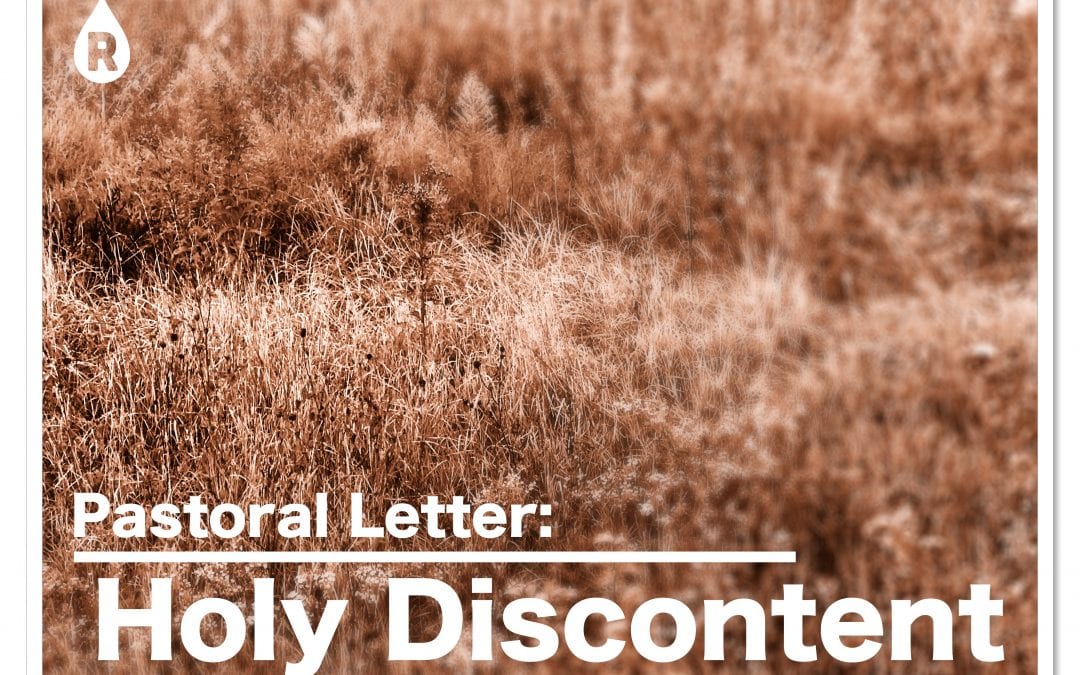As I write these words, we are 7 months into a global pandemic and 37 days from one of the most important and contentious elections in American history. We’ve lived what seems like multiple lifetimes during this season, witnessing horrific acts of violence against African Americans, watching protests and riots fill streets across the country, and looking on as political polarization and division overwhelm our national conscience. On a smaller scale, we’ve fought battles against anxiety, depression, anger, and hopelessness, feeling powerless to make a dent in a crisis that seems far too big for us. And because of this – and rightly so! – many of us are disillusioned.
As a pastor, I have no pithy advice for a moment like this. I, too, have struggled over the last 7 months with feeling helpless to do more than lament. Much of the last few months have felt like a blur. With school starting back and home-school commencing, the disruption of what was “the norm” has continued to expose a shallow self-sufficiency in my spiritual life when I attempt to live for God instead of with Him. I’ve learned, over and over, that God is happy to have me come to the end of myself. It is here, after all, that the real spiritual journey begins.
So if you’ve found yourself at the end of your rope, my message to you today is not “hang in there.” Instead, know that where you are – that where we are – can be the bedrock to rebuild a life and a faith that has roots deep enough for both stability and fruitfulness in spite of the storm we face. It’s why Jesus calls the poor in spirit blessed: after all of our other efforts and postures have failed us, we’ve finally arrived at what we needed all along: dependance. It’s the heart of Eugene Peterson’s paraphrase of this Beatitude: “You’re blessed when you’re at the end of your rope. With less of you there is more of God and his rule (Matthew 5:3 MSG).”
In his book Reappearing Church, Mark Sayers reminds us that, “If you are at the end of yourself, you are ripe for renewal.” In this powerful little book, Sayers points to several points in history that national and global crises served as the starting point for renewal movements in the Church. Sayers notes that these moments are fueled by a holy discontent: a deep, spiritual longing for more than what we’ve known of God and His kingdom in this world, and a dissatisfaction with our current state of being. Combined with the growing crisis in the systems around us and the failure of the stories we’ve believed about the world, we can be propelled to moments of renewal and turn to God, leaving the disillusioned world we knew behind. This is, after all, what it means to be disillusioned – when the illusion is removed. What we thought we knew about God, ourselves, and the world around us has passed, and with new clarity, we see the world as it is. This is how Sayers describes our cultural moment:
Cultural exhaustion opens the doorways to the human heart. When the cultural scripts we live by are exposed as frauds, delivering bad fruit, new possibilities begin to emerge… we ourselves are culturally exhausted hitting or coming upon rock bottom. This is the perfect place to start again, when renewal is no longer an option, but our only hope left.
Restoration, I believe two paths emerge before us. In one, we simply continue trying to edit the faulty stories we’re offered and, at best, live a numb and stunted spiritual life. Over and over, this path has led to burnout, disconnection, and in its worst moments, a loss of faith. But the other path? We surrender our self-sufficiency, we stir the embers of our holy discontent, and we plant the seeds of renewal in our life as we humbly and thankfully come to the end of ourselves – where we find God waiting for us. The pain of staying the same finally exceeds the pain of change. In desperation, we turn to the living God and watch as he does what he does best: move us from death to life.
This is what I want for me, this is what I want and pray for you: renewal. But it won’t come passively. Restoration, press deeper into your rhythms of devotion with God. Come together with your Home Churches and pray and immerse yourselves in the story of God. Share your holy discontent with other folks in your community, pray for one another, and commit to shared practices of spiritual renewal. Stoke the fires of worship! If you feel empty, call a friend and ask for prayer. This isn’t the path of least resistance. What will be easy is continued isolation and surrender to the narratives around us that deform us from the image of Christ. But don’t settle. Feel the holy discontent… and move.
And when we’re able to regather in the days ahead, the renewing work God has done in Home Churches, families, and individual lives will breathe new life into our community and propel us forward towards the calling God has on our Church to be restorers in our city and beyond. But that fire starts with a spark. And that spark starts from the darkness of our own holy discontent – a people who’ve reached the end of themselves, crying out for renewal in the presence of God.
May it be so. Restoration, I love you, I’m praying for you, and I believe in what God is doing to lay the foundation for the years ahead in our Church family. In the words of the old song of worship, “Send revival, start with me.”
Justin Rhorer
9.27.20

